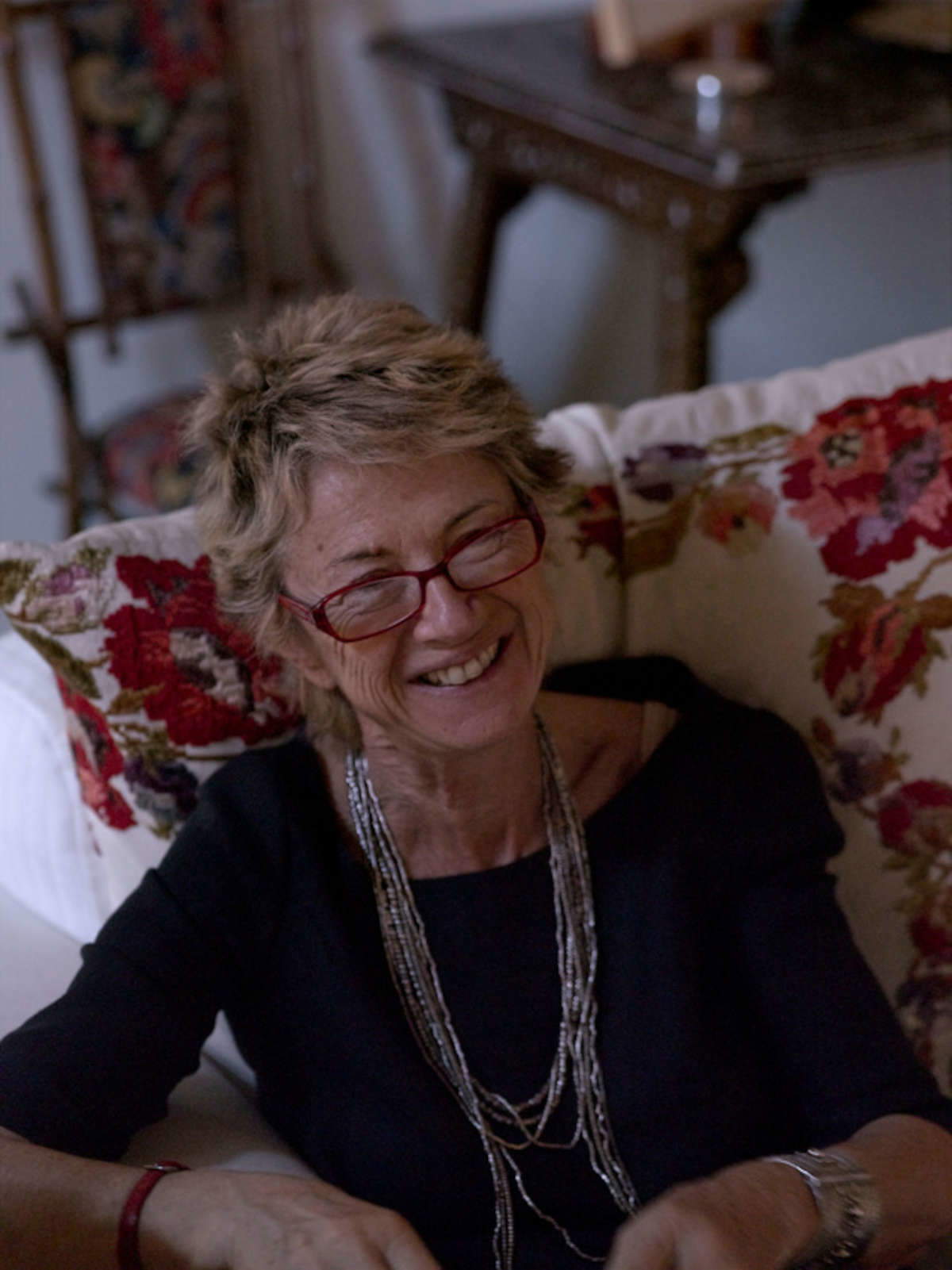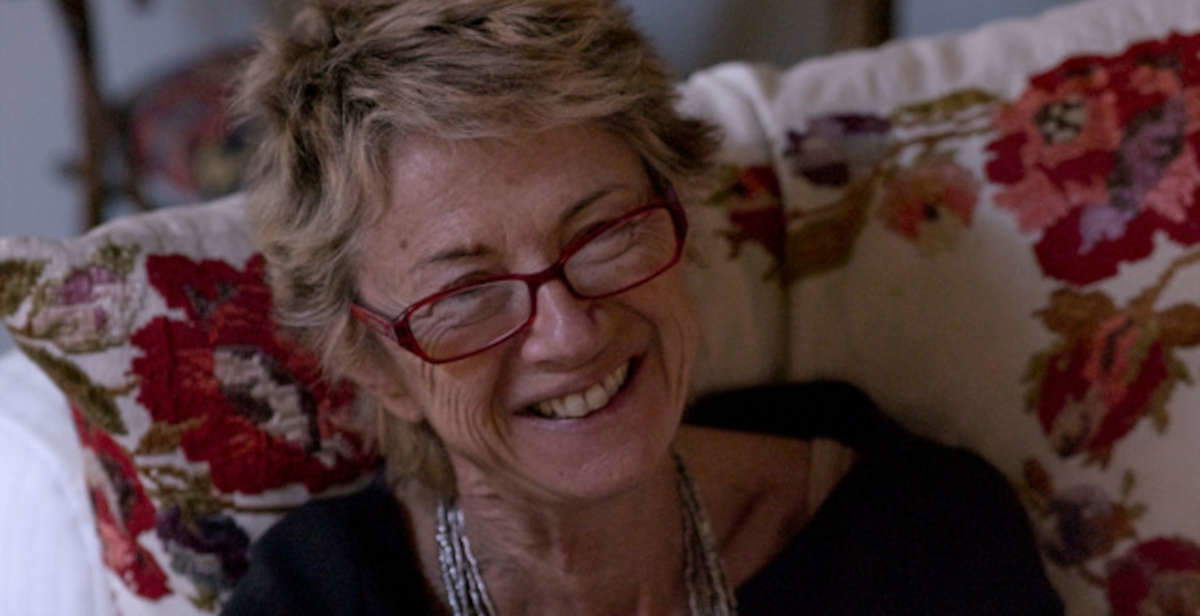Luisa Laureati, a historic gallery owner, intellectual and central figure in the Roman art scene of the second half of the twentieth century, passed away on the night of August 3 to 4 at the age of 86 at her home in Rome’s Ghetto neighborhood. Confirming the news to Adnkronos was her family. Her passing closes a chapter in Italian artistic culture, linked to the founding of the Galleria dell’Oca and her role in making Rome a key crossroads for avant-garde art, literature and critical thought.
Born in 1939 in Dire Daua, Ethiopia (where her father, Lando Laureati, a police commissioner and avid frequenter of cultural circles, had been transferred), Luisa Laureati, who returned to Italy as a child, grew up in a family context that brought her into contact with the art world from the very beginning. Her father, in fact, had been a friend and fellow student of figures such as Nino Franchina, Renato Guttuso and Pietro Zampetti. Once settled in Rome, he attended the studios of artists such as Corrado Cagli and Alberto Burri, in the company of his daughter Luisa, who, while still very young, was introduced to the capital’s artistic circles. As a child she attended Cagli’s studio and was close to personalities such as Stravinsky, Visconti, Afro, Matta and Emilio Villa. Already at the age of eleven she was deeply affected by Giuseppe Capogrossi ’s exhibition at the Il Secolo gallery, an experience that left an indelible mark. This early exposure to art was a prelude to a personal and professional path that would lead her, over the years, to become one of the most important points of reference for the Roman art system.
After working between 1959 and 1960 at the eighth edition of the Quadriennale in Rome, Luisa was introduced by Maria Laura Drudi Gambillo to Bruno Sargentini, who hired her as secretary in the L’Attico gallery. In that context, between 1960 and 1962, she was able to attend important exhibitions and forge lasting relationships with the likes of Victor Brauner and Leoncillo. Brauner, in particular, gave her a work with a personal dedication before he left Rome. During the same period, Luisa met Franco Angeli, an artist with whom she lived between 1960 and 1963 and to whom she remained close until the late 1980s. In those years Rome was going through an intense cultural vitality. Luisa and Angeli lived in Passeggiata di Ripetta, where they were neighbors of Mario Schifano and the couple Ileana and Michael Sonnabend. It was an effervescent microcosm in which art, daily life and political engagement constantly mingled.

Between 1962 and 1964 she worked for Knoll International, an American interior design firm, an experience that would prove instrumental in the birth of the Oca bookstore. With her friend Lilia Meluzzi Leoni, and inspired by a New York model of a bookstore-cafe, Luisa founded a new cultural space in 1964 at 41 Via dell’Oca, in a former dog grooming store. With the help of architect Gianni Folchitto, she transformed the space into a bookstore specializing in design, art and architecture, with an ice cream corner and café.
Success soon came, thanks in part to the strategic location, a stone’s throw from Piazza del Popolo. The bookstore became a meeting place for some of the leading intellectuals of the time: Alberto Moravia, Elsa Morante, Ennio Flaiano, Pier Paolo Pasolini, Elio Petri, Goffredo Parise, Giuseppe Ungaretti, Fortebraccio. Its vocation expanded rapidly, going beyond books and becoming a true center of cultural aggregation. In 1965, the fortuitous meeting with Rosellina Archinto, a Milanese publisher of international scope, gave further impetus to the bookstore. Together they organized events and presentations, such as the famous one of Leo Lionni’s picture book, Piccolo blu e piccolo giallo, accompanied by blue and yellow ice creams. In 1967, the bookstore became the Galleria dell’Oca, an avant-garde exhibition venue that would make a lasting mark on the Roman art scene.
The gallery hosted exhibitions devoted to artists such as Jannis Kounellis, Carol Rama, Sebastian Matta, Giulio Paolini, Gastone Novelli, and Eliseo Mattiacci, and was the site of historic exhibitions featuring works by Giorgio Morandi, Renato Guttuso, and Filippo De Pisis. The Galleria dell’Oca was not only an exhibition space, but a permanent laboratory of aesthetic and intellectual reflection, animated by an intense cultural life.
In the early 1970s, Luisa shared the management of the gallery with collaborators such as Mara Masciarelli and, for a brief period, Rosanna Silva. The gallery was also the scene of experimentation, with the introduction of art and design objects, vintage fabrics transformed into clothes, and hybrid artistic creations. The contamination between visual arts, fashion and material culture was one of the stylistic figures of those years.
In 1973 she married art historian Giuliano Briganti, with whom she formed one of the most influential couples in Italianartistic culture . Together, they combined research, passion and popularization, helping to define an idea of culture capable of combining tradition and experimentation. Their respective activities - Briganti with studies on ancient and modern art, Laureati with the promotion of the avant-garde - formed a rare balance between rigor and intuition.
The Goose Gallery continued its activities until 1997, when it closed its doors. But its cultural legacy has remained, as evidence of an unrepeatable season when Rome was at the center of an international artistic ferment. In those spaces were intertwined stories, ideas, poetics that still mark the city’s cultural memory.
Luisa Laureati was able to traverse the transformations of the art world with a curious, critical and never rhetorical gaze. Her approach was never purely commercial or celebratory: she sought dialogue, research, and creative tension. His exhibition choices reflected a deep sensitivity to contemporary art dynamics, and an extraordinary ability to recognize emerging talent. Her passing represents the loss of a witness and protagonist of an era when art and culture lived in the everydayness of places, before they became consumer products or mass phenomena. With Luisa Laureati, therefore, an important page in Italian cultural history closes.
 |
| Farewell to Luisa Laureati, gallery owner and soul of the Roman art scene of the second half of the 20th century |
Warning: the translation into English of the original Italian article was created using automatic tools. We undertake to review all articles, but we do not guarantee the total absence of inaccuracies in the translation due to the program. You can find the original by clicking on the ITA button. If you find any mistake,please contact us.